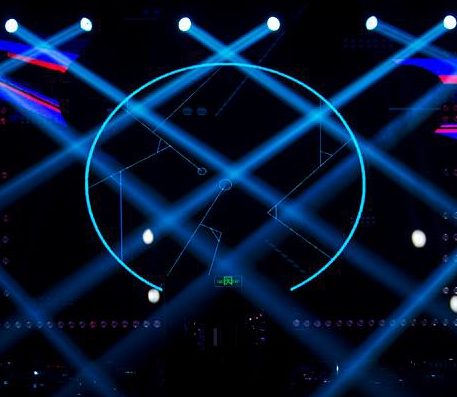The history of E.R.A.A. begins with the formation Most Technical UK, in 1995, by acclaimed underground club designer Dave Parry with the sole aim to provide the best and most innovative solutions of sound, lighting and video systems for both nightclub and corporate installations.
Most Technical first appeared on the clubbing radar with a critically acclaimed re-design and installation of the sound and light systems at the iconic Ministry of Sound where Dave had designed the original lighting scheme.
With the first installation of digital sound control and the first use of Clay Paky’s H.P.E moving heads Most Technical began its reputation for innovation and sonic excellence.
Wanting to deal only with clients who shared his visionary ideas, Dave went underground to experiment with lighting, sound and video technology; emerging occasionally to redesign Camden Palace’s lighting rig and provide a fully digital networked audio system for the Green Rooms in Bradford.
Dave surfaced briefly again to design Club Coliseum’s sound and light system, and in keeping with his reputation for innovation, each of the 6 p.a stacks in the main room were separately controlled by a radio link to a standalone controller mounted in the d.j box.
This allowed the D.J to manipulate the sound around the dance floor immersing the dancers in the music, a theme which would continue throughout the rest of Dave’s work.
In the summer of 1996, Dave Parry was approached by Keith Reilly to design and specify a sound and light system for his new club in Shoreditch.
The result was the seminal nightclub ‘fabric’!
Voted in the top 3 of the best clubs in the world for the past 14 years, much has been written about this historic nightspot that truly changed the face of sound and light system design and won many awards.
Allowed free reign for his imagination, Dave’s design produced many firsts including the first ‘line array’ install, the first fully digital wireless control network, the first ‘Timax’ 3d sound system and many more.
The constant and continuing innovations caused Night magazine to declare Dave Parry to be the most important club innovator of the decade in 2009.
Fabric also saw the introduction of the Body-Kinetic floor, a system that transmitted ultra low frequencies through the dancer’s body promoting a feeling of euphoria. So advanced was the whole of fabrics sound system that it featured on the BBC’s technology programme Tomorrow’s world.
The following years saw Most technical working all over the U.K producing some of the world’s most famous dance clubs including the sound system and Body-Kinetic dance floor for the Sub Club in Scotland, a beautiful sound and light install at Re-hab in Leeds for the legendary promoter Dave Beer and an innovative light and sound system for Sir Terence Conran in Paris: The Wagg club featured the first full L.E.D lighting rig and full 3d immersive sound.
During this time Dave was approached by Indian business man Monty Chadha, with a view to building a club in Delhi, out of these discussions came the mighty ‘Elevate’, India’s first ‘super club’. Featuring a huge video install, a massive sound system and lighting rig along with a 46,000 watt Body-Kinetic floor Elevate swiftly became the biggest club in India, and a favourite of international D.J’s who voted it into the top 20 of the world’s best clubs.
After returning from Delhi and wanting to get back to his roots of lighting design and touring, Dave spent the next couple of years touring the world with various bands and working on lighting desks for Avolites.
In 2008 Most Technical blasted back onto the scene with the sensational ‘matter’.
Described by many as the world’s most advanced nightclub ‘matter’ has totally changed the way nightclubs light and sound systems are designed.
By fully integrating lighting, and video with a 75,000 watt Body Kinetic floor and a full 3d immersive sound system as well as a huge R.G.B, L.E.D network, ‘matter’ allows the d.j to fully manipulate all the systems (from a simple keyboard) totally immersing the dancers into the music and visual images not only on the dance floor but throughout the entire venue.
In 2009 Dave returned to set up Most Technical India with Business partner Arjun Bahl, building clubs for 5 star hotel groups such as Park and Lalit hotels, with some stunning sound and video work at Shroom in Delhi alongside stage designs for Carlsberg and a hidden sound and lighting system for Shiro restaurant.
Returning to the UK Dave worked with designers Blacksheep on clubs for Boujis and the Hilton group as well as a club for Boujis in Hong Kong. Dave also started a partnership with video innovators Immersive (with whom he had worked on matter.)
In 2012 Dave started ERAA with partner David Chow allowing his design ethos to penetrate the growing Chinese Nightclub / corporate market with several installs across the region as well as a recording studio and some highly innovative video solutions ERAA are redefining the club and corporate scene across China.
